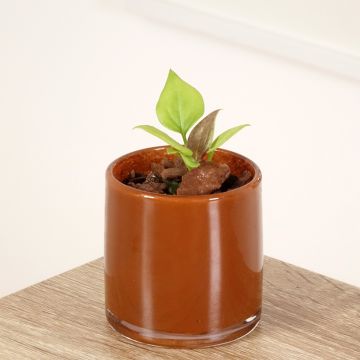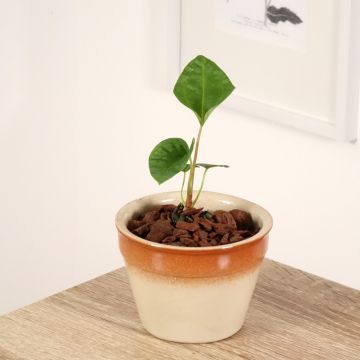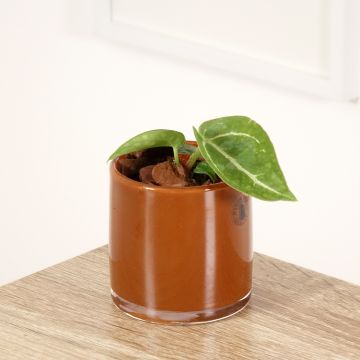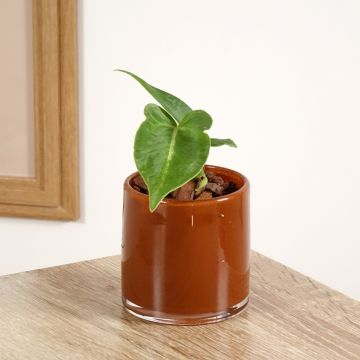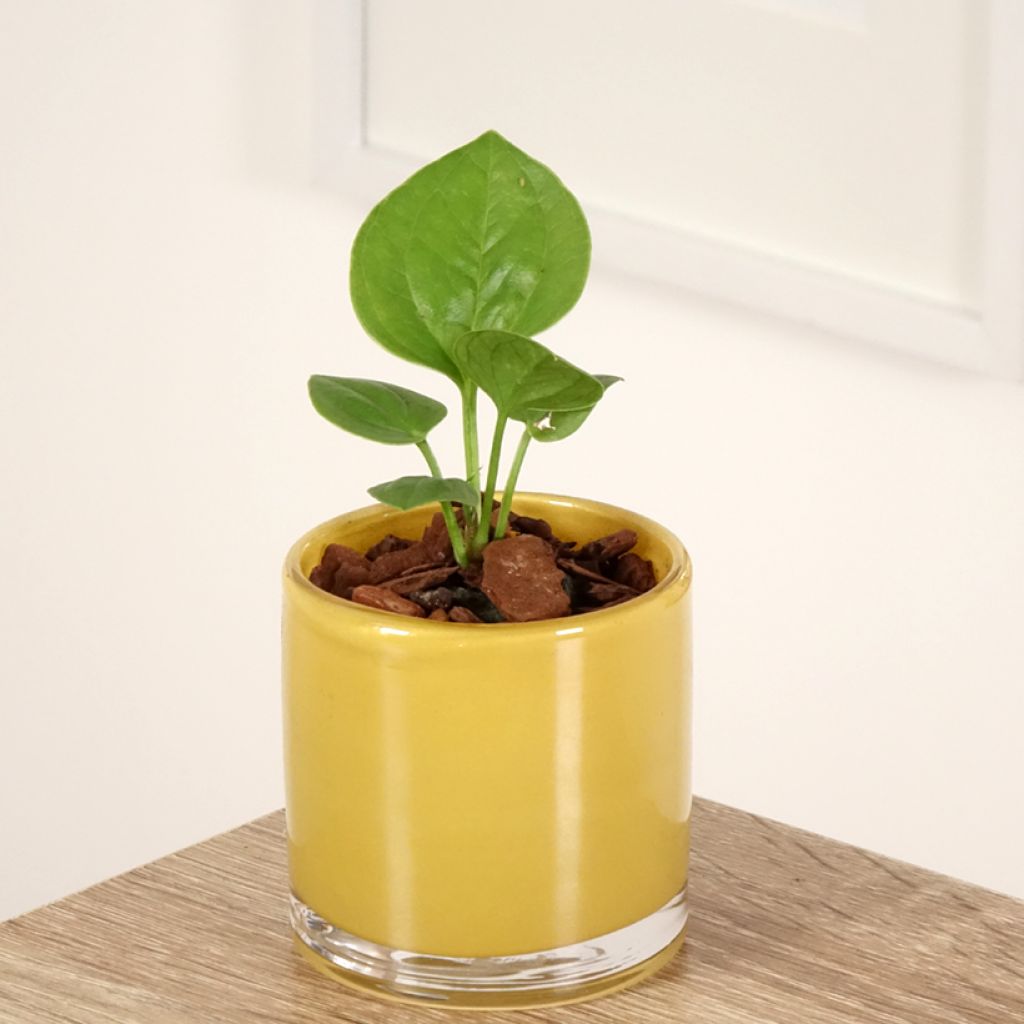

Anthurium jenmanii Green Jady
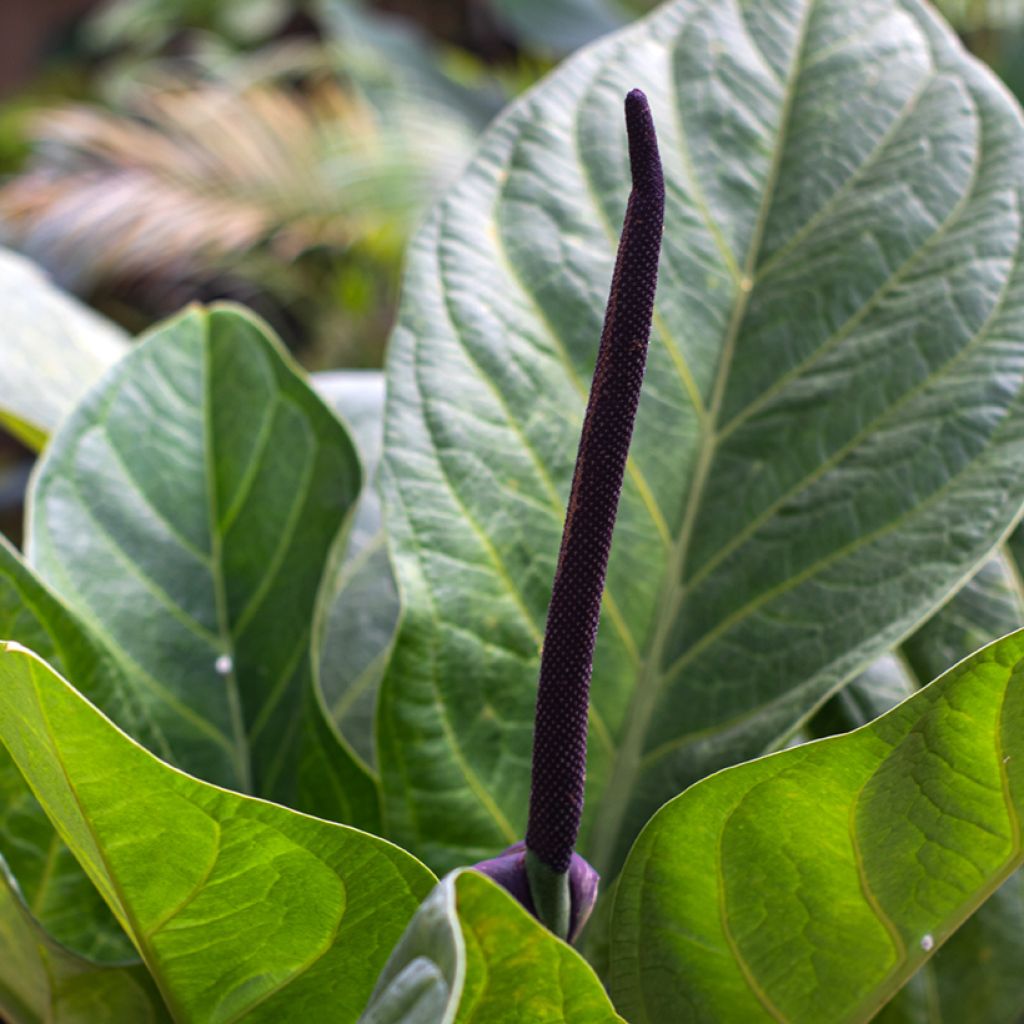

Anthurium jenmanii Green Jady
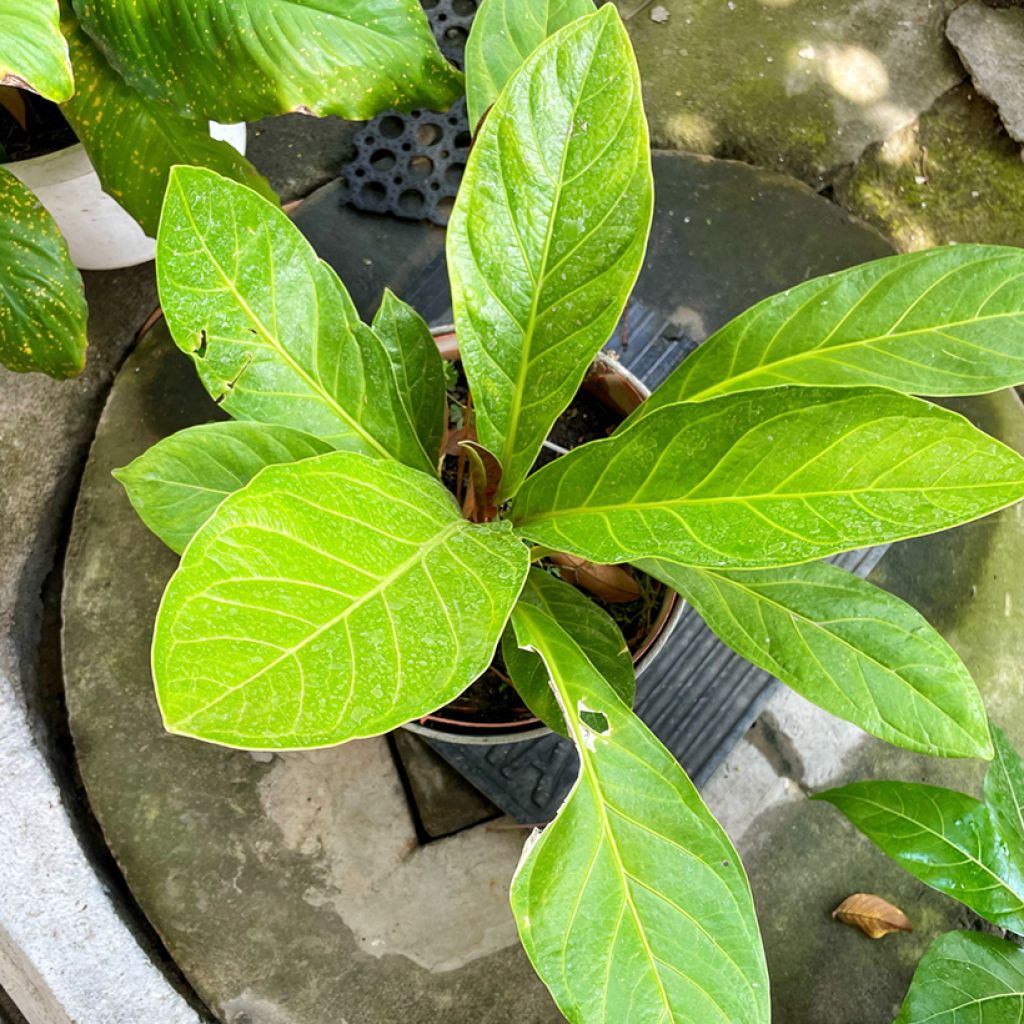

Anthurium jenmanii Green Jady
Anthurium jenmanii Green Jady
Anthurium jenmanii Green Jady
This item cannot be shipped to the selected country
Delivery charge from €6.90
More information
Schedule delivery date,
and select date in basket
This plant carries a 30 days recovery warranty
More information
We guarantee the quality of our plants for a full growing cycle, and will replace at our expense any plant that fails to recover under normal climatic and planting conditions.
From €7.90 for pickup delivery and €6.90 for home delivery
Express home delivery from €8.90.
Description
Anthurium jenmanii 'Green Jady' is a very rare cultivar with strikingly colourful foliage. Its long, lanceolate leaves, marked with veins and slightly wrinkled, stand out due to their remarkable thickness, earning the original botanical species (also rare) the nickname "cardboard plant." The young leaves reveal hues ranging from orange to dark red before turning to light lime green as they mature. This Anthurium adopts a "bird's nest" form with a rosette growth habit. Less flashy than Anthuriums with large, cordate, and variegated leaves, it nonetheless possesses a singular elegance. To keep it in optimal health, place it somewhere bathed in indirect light and ensure high ambient humidity.
Belonging to the Araceae family, Anthurium jenmanii 'Green Jady' is a perennial with an upright, bushy habit, typically reaching 50 cm in height and 70 cm in spread. Its growth is moderate, gradually developing large, thick, lanceolate leaves measuring up to 20 cm in length. These leaves have a glossy, veined, and slightly wrinkled texture. Flowering, though subtle, may occasionally occur, producing a white or pink spathe accompanied by a spadix.
Native to Trinidad and Tobago through to Brazil, Anthurium jenmanii is a species that grows naturally in humid tropical forests as well as dry, open woodlands and granite outcrops, where it can be terrestrial, epiphytic, or epilithic. These natural conditions indicate that its needs differ slightly from round-leaved Anthuriums of the crystallinum type. Slightly less demanding, it tolerates average light conditions and slightly lower humidity, though always requiring a well-draining substrate for successful indoor cultivation.
Anthurium jenmanii 'Green Jady' is a remarkable, captivating cultivar with exceptionally thick foliage and vibrant, luminous colour. This plant, with its singular charm, fits into all decor styles, provided it has the space to showcase its silhouette. To enhance its exotic allure, pair it with plants featuring plain green or variegated foliage, creating lovely contrasts and an elegant, transporting atmosphere.
Report an error about the product description
Anthurium jenmanii Green Jady in pictures
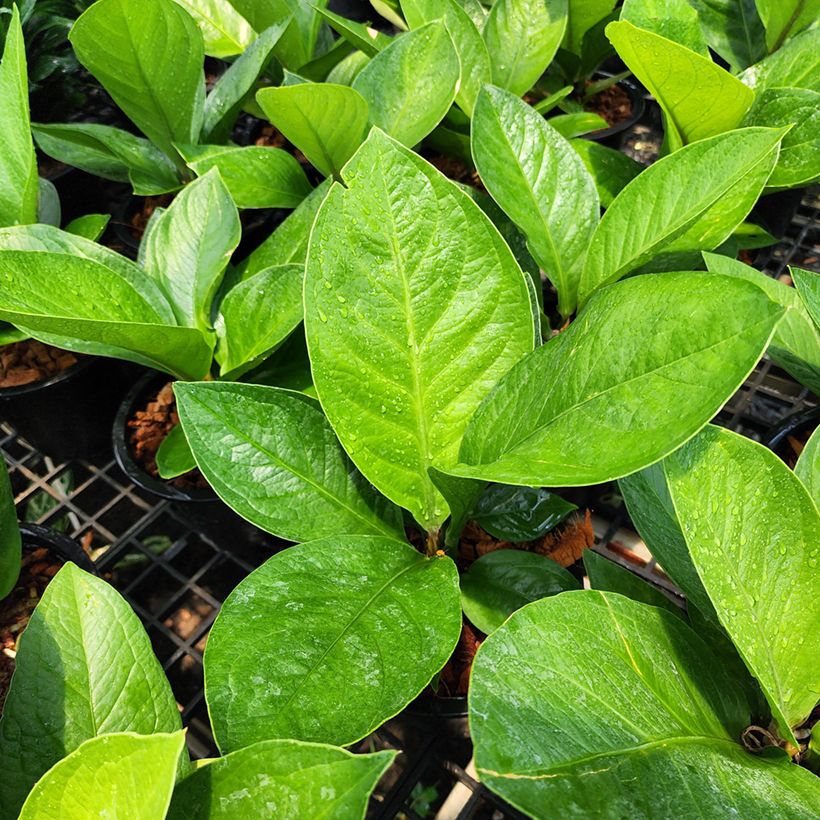

Foliage
Plant habit
Flowering
Botanical data
Anthurium
jenmanii
Green Jady
Araceae
Cultivar or hybrid
Safety measures
Other Anthurium - Flamingo Flower
View all →Location
Location
Maintenance and care
Potting advice, substrates and fertilisers
Houseplant care
Disease and pest advice
Maintenance and care
This item has not been reviewed yet - be the first to leave a review about it.
Haven't found what you were looking for?
Hardiness is the lowest winter temperature a plant can endure without suffering serious damage or even dying. However, hardiness is affected by location (a sheltered area, such as a patio), protection (winter cover) and soil type (hardiness is improved by well-drained soil).

Photo Sharing Terms & Conditions
In order to encourage gardeners to interact and share their experiences, Promesse de fleurs offers various media enabling content to be uploaded onto its Site - in particular via the ‘Photo sharing’ module.
The User agrees to refrain from:
- Posting any content that is illegal, prejudicial, insulting, racist, inciteful to hatred, revisionist, contrary to public decency, that infringes on privacy or on the privacy rights of third parties, in particular the publicity rights of persons and goods, intellectual property rights, or the right to privacy.
- Submitting content on behalf of a third party;
- Impersonate the identity of a third party and/or publish any personal information about a third party;
In general, the User undertakes to refrain from any unethical behaviour.
All Content (in particular text, comments, files, images, photos, videos, creative works, etc.), which may be subject to property or intellectual property rights, image or other private rights, shall remain the property of the User, subject to the limited rights granted by the terms of the licence granted by Promesse de fleurs as stated below. Users are at liberty to publish or not to publish such Content on the Site, notably via the ‘Photo Sharing’ facility, and accept that this Content shall be made public and freely accessible, notably on the Internet.
Users further acknowledge, undertake to have ,and guarantee that they hold all necessary rights and permissions to publish such material on the Site, in particular with regard to the legislation in force pertaining to any privacy, property, intellectual property, image, or contractual rights, or rights of any other nature. By publishing such Content on the Site, Users acknowledge accepting full liability as publishers of the Content within the meaning of the law, and grant Promesse de fleurs, free of charge, an inclusive, worldwide licence for the said Content for the entire duration of its publication, including all reproduction, representation, up/downloading, displaying, performing, transmission, and storage rights.
Users also grant permission for their name to be linked to the Content and accept that this link may not always be made available.
By engaging in posting material, Users consent to their Content becoming automatically accessible on the Internet, in particular on other sites and/or blogs and/or web pages of the Promesse de fleurs site, including in particular social pages and the Promesse de fleurs catalogue.
Users may secure the removal of entrusted content free of charge by issuing a simple request via our contact form.
The flowering period indicated on our website applies to countries and regions located in USDA zone 8 (France, the United Kingdom, Ireland, the Netherlands, etc.)
It will vary according to where you live:
- In zones 9 to 10 (Italy, Spain, Greece, etc.), flowering will occur about 2 to 4 weeks earlier.
- In zones 6 to 7 (Germany, Poland, Slovenia, and lower mountainous regions), flowering will be delayed by 2 to 3 weeks.
- In zone 5 (Central Europe, Scandinavia), blooming will be delayed by 3 to 5 weeks.
In temperate climates, pruning of spring-flowering shrubs (forsythia, spireas, etc.) should be done just after flowering.
Pruning of summer-flowering shrubs (Indian Lilac, Perovskia, etc.) can be done in winter or spring.
In cold regions as well as with frost-sensitive plants, avoid pruning too early when severe frosts may still occur.
The planting period indicated on our website applies to countries and regions located in USDA zone 8 (France, United Kingdom, Ireland, Netherlands).
It will vary according to where you live:
- In Mediterranean zones (Marseille, Madrid, Milan, etc.), autumn and winter are the best planting periods.
- In continental zones (Strasbourg, Munich, Vienna, etc.), delay planting by 2 to 3 weeks in spring and bring it forward by 2 to 4 weeks in autumn.
- In mountainous regions (the Alps, Pyrenees, Carpathians, etc.), it is best to plant in late spring (May-June) or late summer (August-September).
The harvesting period indicated on our website applies to countries and regions in USDA zone 8 (France, England, Ireland, the Netherlands).
In colder areas (Scandinavia, Poland, Austria...) fruit and vegetable harvests are likely to be delayed by 3-4 weeks.
In warmer areas (Italy, Spain, Greece, etc.), harvesting will probably take place earlier, depending on weather conditions.
The sowing periods indicated on our website apply to countries and regions within USDA Zone 8 (France, UK, Ireland, Netherlands).
In colder areas (Scandinavia, Poland, Austria...), delay any outdoor sowing by 3-4 weeks, or sow under glass.
In warmer climes (Italy, Spain, Greece, etc.), bring outdoor sowing forward by a few weeks.

































